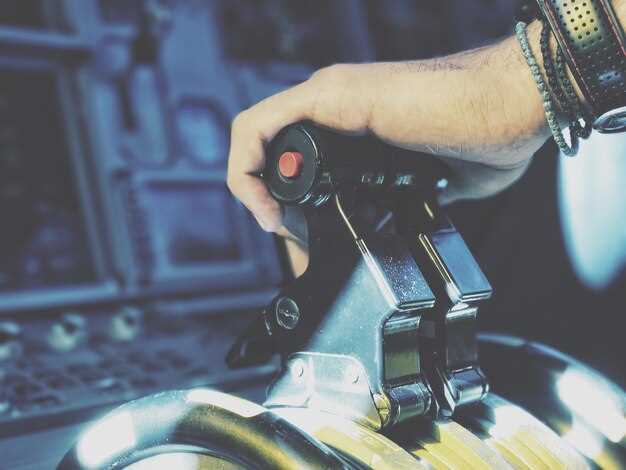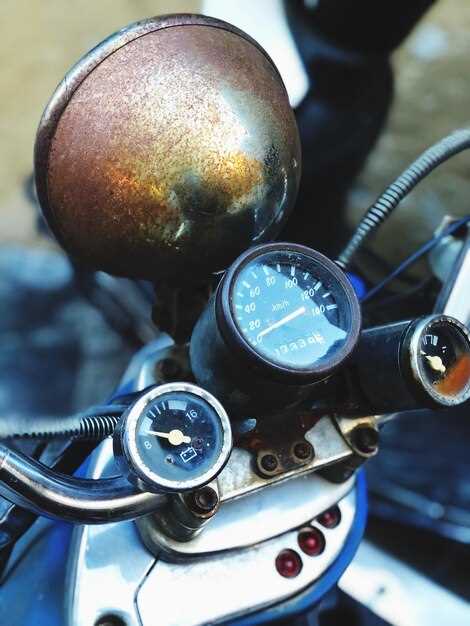
In the fast-paced world of motorcycling, encountering an error in your bike’s performance can be frustrating. A faulty engine control unit (ECU) may lead to a range of issues, affecting your ride’s power and efficiency. Knowing how to reset the ECU safely is crucial for both novice and experienced riders to ensure that their motorcycle runs smoothly and efficiently.
The ECU acts as the brain of your motorcycle, managing various functions such as fuel injection, ignition timing, and emission controls. When parameters get out of alignment, it may trigger an error code, indicating that something is amiss. Resetting the ECU can help clear these codes and restore optimal performance. However, it is essential to follow reliable steps to avoid causing more damage or misconfigurations.
This guide will provide you with a detailed process on how to reset your motorcycle’s ECU safely. By adhering to these steps, you can mitigate risks and maintain your bike’s functionality, ensuring a robust and enjoyable riding experience. Let’s dive into the essential steps to accomplish this task effectively.
Understanding Motorcycle ECU Error Codes and Their Importance

The Engine Control Unit (ECU) of a motorcycle plays a crucial role in managing engine performance and efficiency. One of its key functions is to monitor various sensors and systems, generating error codes when abnormalities are detected. These codes act as vital diagnostic tools that help in identifying issues affecting motorcycle performance.
When the ECU identifies a problem, it triggers a specific error code that can be retrieved using a diagnostic scanner. These codes follow a standardized format, such as the OBD-II (On-Board Diagnostics) protocol. Understanding these codes is essential for both motorcycle owners and mechanics, as they provide insights into the nature and severity of the issue.
The importance of these error codes cannot be overstated. They not only pinpoint the location of a malfunction but also aid in determining whether a reset of the ECU is necessary. Clearing or resetting the ECU after addressing the identified issues can restore optimal functionality. However, merely resetting the ECU without rectifying underlying problems can lead to recurring issues and potential damage.
By regularly monitoring and interpreting ECU error codes, riders can maintain their motorcycles in peak condition, ensuring safety and enhancing performance. Understanding this aspect of motorcycle maintenance is essential for anyone looking to improve their riding experience.
Step-by-Step Guide to Safely Reset Your Motorcycle ECU
Resetting your motorcycle’s ECU (Engine Control Unit) can help resolve issues related to fault codes and performance. Follow these steps carefully to ensure a safe reset process.
Step 1: Gather Necessary Tools
Before beginning the reset, collect all required tools, including a diagnostic scanner compatible with your motorcycle, a set of basic hand tools, and the motorcycle’s user manual. This will help you understand specific procedures related to your model.
Step 2: Turn Off the Ignition
Ensure the motorcycle is completely off. Remove the key from the ignition to prevent any accidental startups during the reset process. Safety is paramount, so double-check that everything is switched off.
Step 3: Locate the ECU
Identify the location of your motorcycle’s ECU, which is usually found under the seat or near the engine. Refer to your motorcycle’s user manual for the exact position. Taking a moment to find it will streamline the reset process.
Step 4: Disconnect the Battery
Disconnect the negative terminal of the battery to ensure there is no power supplied to the ECU during the reset. This helps protect the unit from potential damage and allows for a proper reset without interference.
Step 5: Wait for a Minimum of 10 Minutes
Allow the motorcycle to sit without battery connection for at least 10 minutes. This waiting period ensures that the ECU clears any stored fault codes and resets its parameters effectively.
Step 6: Reconnect the Battery
Reconnect the negative terminal of the battery securely, ensuring a firm connection but not over-tightening. This step restores power to the ECU, preparing it for the next phase of the reset.
Step 7: Use the Diagnostic Scanner
Connect the diagnostic scanner to the motorcycle’s OBD (On-Board Diagnostics) port. Turn on the ignition without starting the engine. Follow the scanner’s instructions to clear any stored codes and reset the ECU. This process will help refresh the unit and eliminate previous errors.
Step 8: Test Ride
Once the reset is complete, take your motorcycle for a test ride. Monitor performance and watch for warning lights on the dashboard. This ensures that the reset was successful and that your ECU is functioning properly.
Step 9: Re-check Codes
After the test ride, you may want to reconnect the diagnostic scanner to check for any new codes. This final verification confirms that no new issues have arisen after the reset.
Following these steps will help you safely reset your motorcycle ECU, potentially improving performance and resolving fault codes effectively.
Common Issues After ECU Reset and How to Diagnose Them

After resetting your motorcycle’s ECU, you may encounter several common issues that could affect performance and functionality. One of the first symptoms is the appearance of error codes. These codes can indicate various problems and often require an OBD-II scanner to retrieve them for proper diagnosis.
Another issue commonly observed is intermittent starting problems. After an ECU reset, the engine may struggle to start initially as the ECU relearns specific engine parameters. If this issue persists beyond a few start cycles, it may point to a deeper issue within the fuel delivery or ignition systems.
Additionally, you may experience irregular idling. The engine might idle too high, too low, or fluctuate during operation. This irregularity often results from the ECU not yet optimizing air-fuel mixtures post-reset. If this condition continues, further investigation into throttle position sensors or idle air control valves may be required.
Fuel efficiency can also decline unexpectedly. Once the ECU resets, it may still be adjusting its algorithms for optimal fuel consumption. Until it reestablishes the correct parameters, you might notice a drop in miles per gallon. If fuel efficiency doesn’t improve over time, examining injectors and filters for blockages is advisable.
Finally, the check engine light may illuminate due to stored error codes after the reset. This indicator is a warning sign that something is amiss, prompting the need for code retrieval and analysis. Understanding these codes can help pinpoint the exact issue and guide necessary repairs.
In summary, while an ECU reset can refresh your motorcycle’s systems, it can also lead to various issues such as error codes, starting problems, irregular idling, decreased fuel efficiency, and warning lights. Proper diagnosis, using available tools and methods, is crucial to address these concerns effectively.
